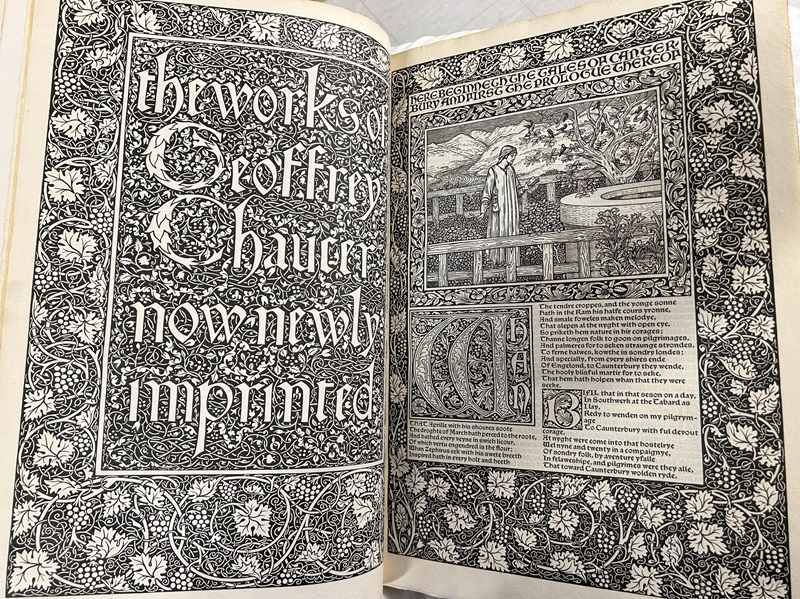
The title page of the Kelmscott edition of Chaucer.
The Kelmscott Press was established at Hammersmith in 1891 by William Morris (1834-1896) and the illustrator and printer Emery Walker (1851-1933).
Inspired by the beauty of 15th-century roman type-faces and wood-cut illustrations, Morris and Walker aimed to equal the highest standards of the past. The book designs were modelled on medieval incunabula and the roman Golden Type, fashioned by Morris, was influenced by the French engraver and printer Nicolaus Jenson (1420-1480), who worked in Venice. Morris himself oversaw all aspects of book production, selecting the paper and the form of type, spacing the letters and setting the type himself.
More than 50 books were produced at the Press between 1891 and 1899. The edition of The works of Geoffrey Chaucer (1896) is the most magnificent. It is printed on paper made entirely of linen with a Morris-designed watermark copied from an Italian incunable in his own library. The Chaucer is illustrated with eight-seven woodcuts by the great Birmingham artist Edward Burne-Jones (1833-1898), and with variously repeated woodcut borders, frames, and initial words and letters all designed by Morris. The books are in their original bindings, either in limp vellum with silk ties or quarter blue holland boards.